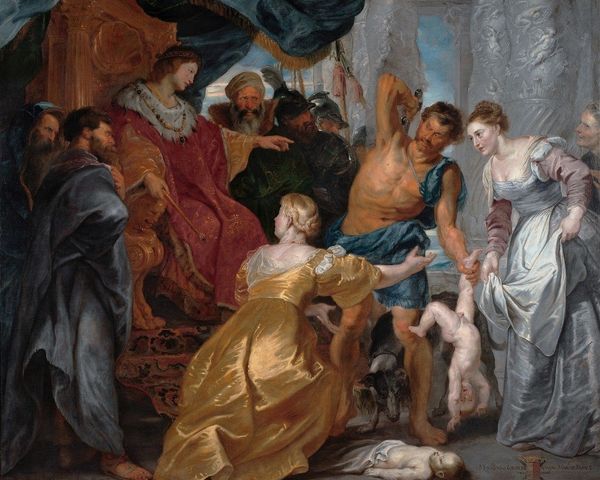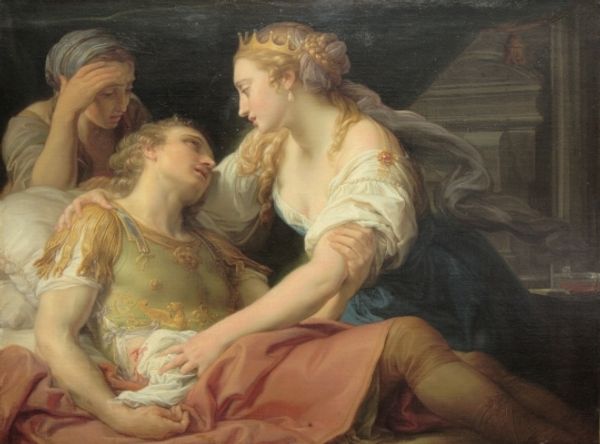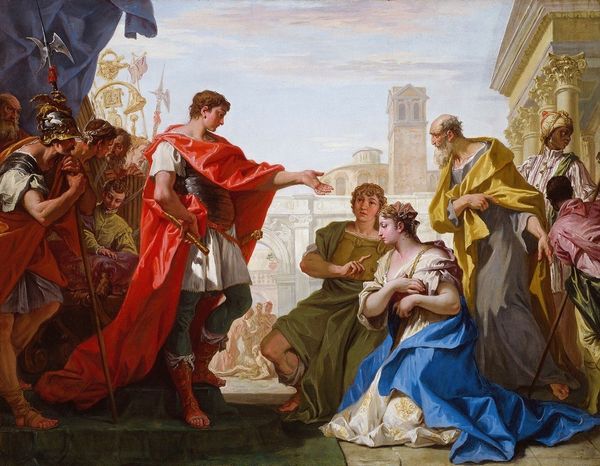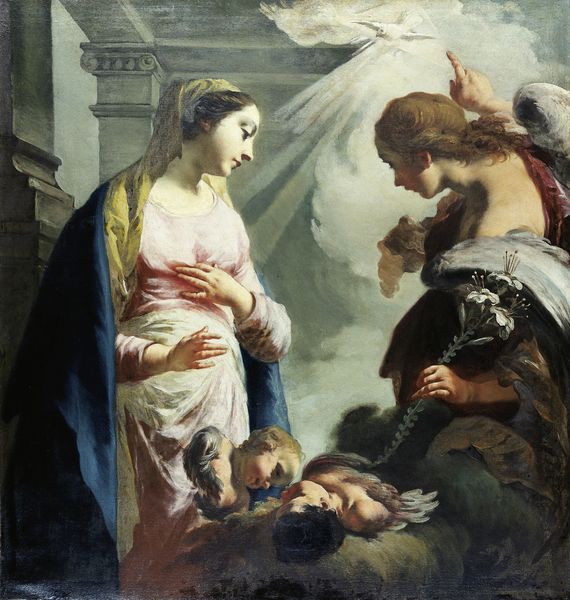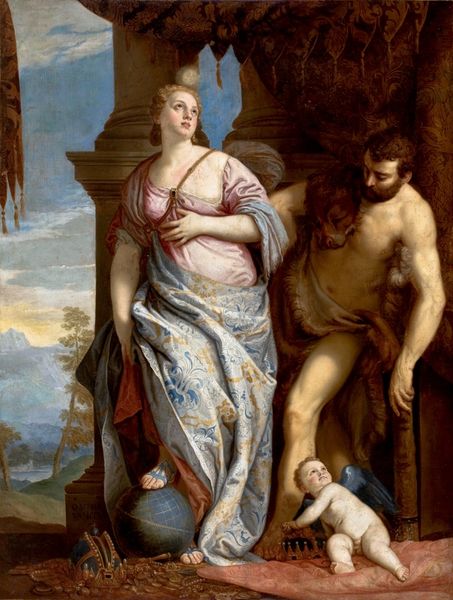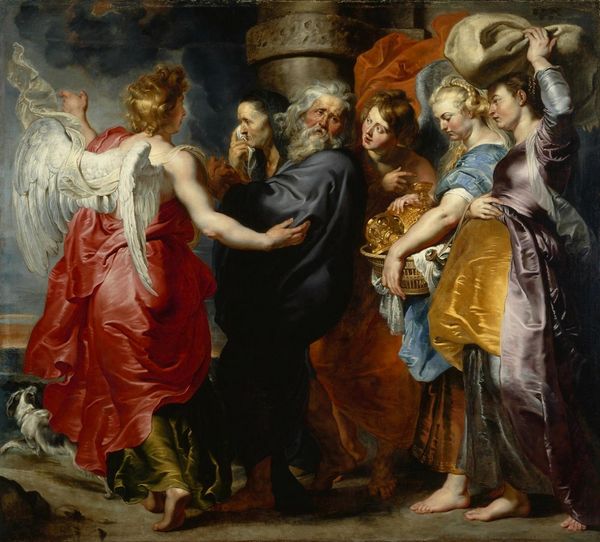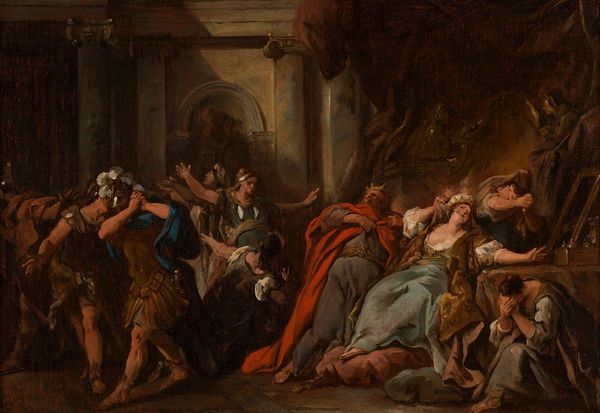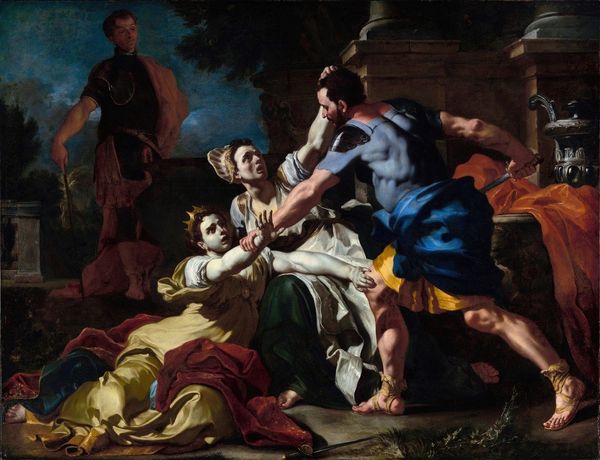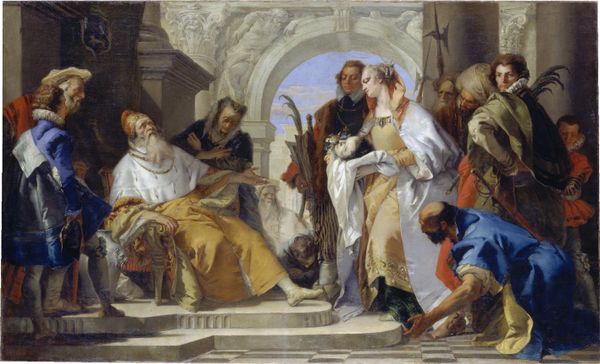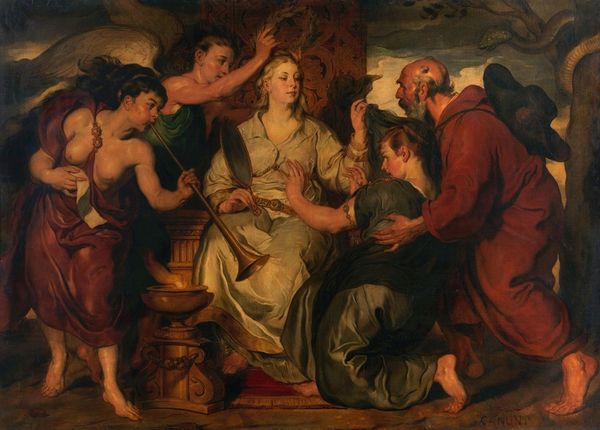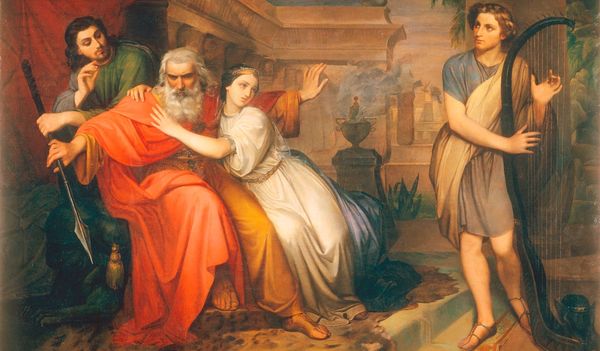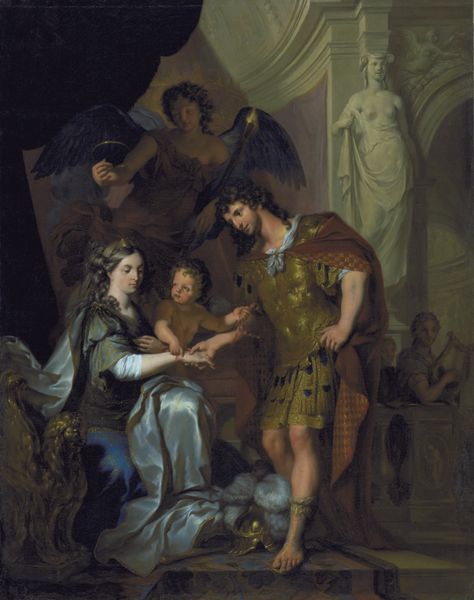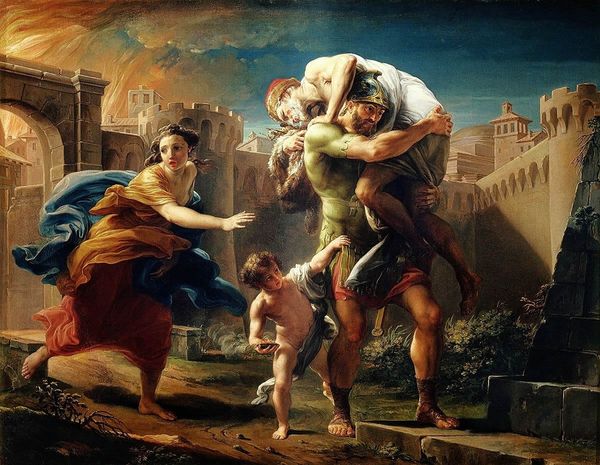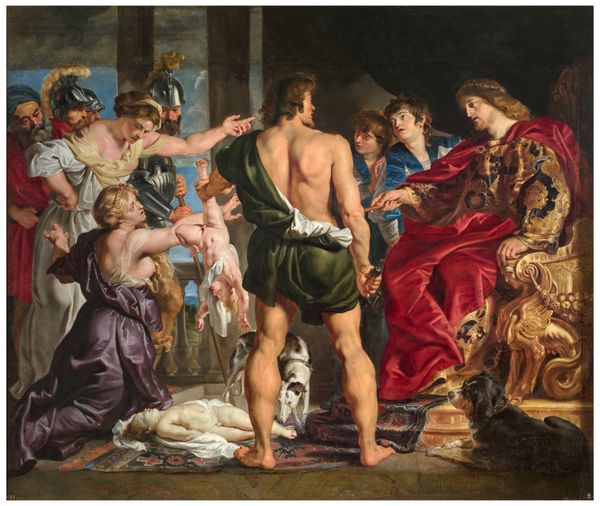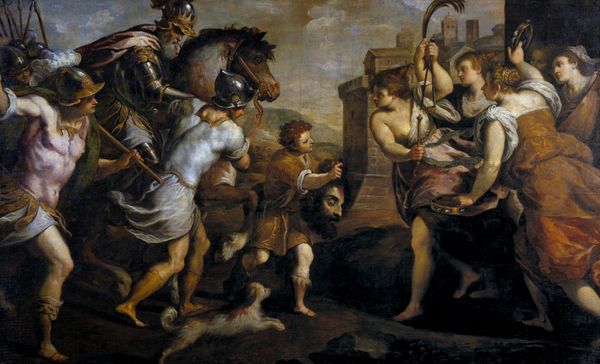
oil-paint
#
allegory
#
baroque
#
oil-paint
#
figuration
#
oil painting
#
mythology
#
painting painterly
#
history-painting
Dimensions: 463 x 645 cm
Copyright: Public domain
Curator: Here we have Peter Paul Rubens' "Mars and Rhea Silvia" dating back to 1620. Editor: It strikes me immediately as theatrical. The swirling fabrics, the dramatic lighting – it's all about spectacle and a sense of grandeur. The figures almost seem to leap from the canvas. Curator: Absolutely. Rubens, master of the Baroque, really knew how to capture movement and emotion. And when we think about its creation, we have to acknowledge it emerged from a workshop context, produced by not just one artist, but also an entourage of artisans specializing in different aspects of the painting from the background to details of drapery, armor, flesh, and even to sign his name to it. This system involved various skilled labors that ensured a high level of output for this famous and much sought-after painter. Editor: Yes, the texture created is dynamic. Look at the contrasting materials, from the gleaming metal of Mars' armor to the soft folds of Rhea Silvia’s gown and the plush fabric that she is reclining on. The artist highlights the beauty of fabrics—a painterly virtuosity celebrating opulence and wealth! What do you make of the figures of cupid? Curator: Note also the specific placement of Mars to the left and the almost coy posture of the young maiden as well as the flaming sacrifice and sculptural relief; the painting tells a very specific story related to both classical antiquity and the socio-economic-religious contexts of the Counter Reformation period that followed the Council of Trent. Editor: I see what you mean. It's as much a display of technique as it is a narrative. Thinking about it more broadly now, it feels like less about historical figures or even grand mythology and more of an orchestrated scene for painting itself. Curator: Indeed. Rubens utilizes this mythological episode to emphasize his skills but equally promotes and builds up the market for his brand. Editor: I hadn't thought of it quite that way before, but it definitely colors how I see it now. Curator: Likewise, considering the composition and how the workshop made this artwork makes me see the dynamism of this piece in a whole new light.
Comments
No comments
Be the first to comment and join the conversation on the ultimate creative platform.
